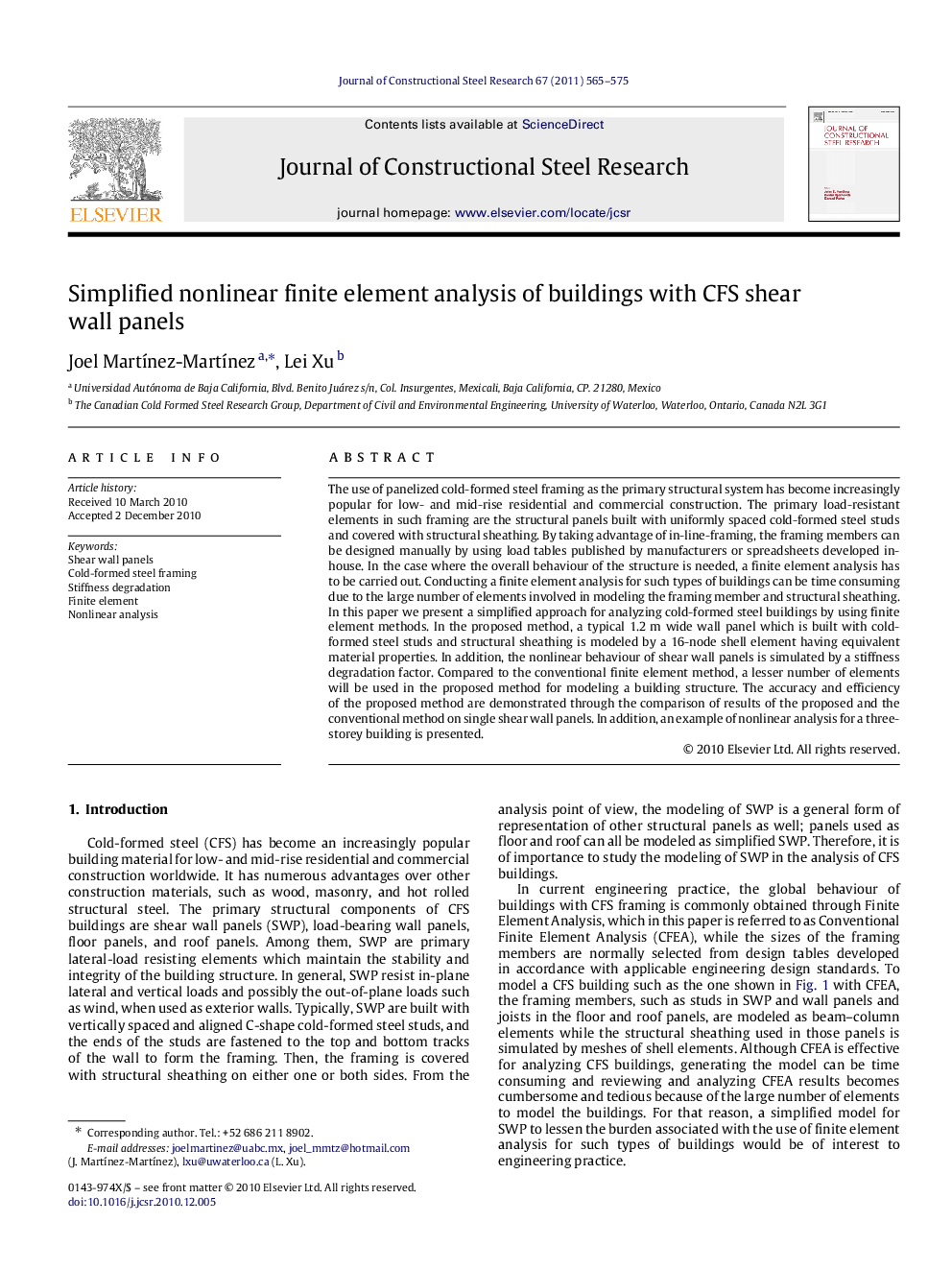| Article ID | Journal | Published Year | Pages | File Type |
|---|---|---|---|---|
| 285587 | Journal of Constructional Steel Research | 2011 | 11 Pages |
The use of panelized cold-formed steel framing as the primary structural system has become increasingly popular for low- and mid-rise residential and commercial construction. The primary load-resistant elements in such framing are the structural panels built with uniformly spaced cold-formed steel studs and covered with structural sheathing. By taking advantage of in-line-framing, the framing members can be designed manually by using load tables published by manufacturers or spreadsheets developed in-house. In the case where the overall behaviour of the structure is needed, a finite element analysis has to be carried out. Conducting a finite element analysis for such types of buildings can be time consuming due to the large number of elements involved in modeling the framing member and structural sheathing. In this paper we present a simplified approach for analyzing cold-formed steel buildings by using finite element methods. In the proposed method, a typical 1.2 m wide wall panel which is built with cold-formed steel studs and structural sheathing is modeled by a 16-node shell element having equivalent material properties. In addition, the nonlinear behaviour of shear wall panels is simulated by a stiffness degradation factor. Compared to the conventional finite element method, a lesser number of elements will be used in the proposed method for modeling a building structure. The accuracy and efficiency of the proposed method are demonstrated through the comparison of results of the proposed and the conventional method on single shear wall panels. In addition, an example of nonlinear analysis for a three-storey building is presented.
Research highlights► Buildings can be analyzed with a lesser number of shell elements using the simplified FEA. ► Computing time is saved using an equivalent element to model a shear wall panel. ► We introduce a stiffness degradation model for shear wall panels. ► Analysis results show good agreement with experimental testing results.
